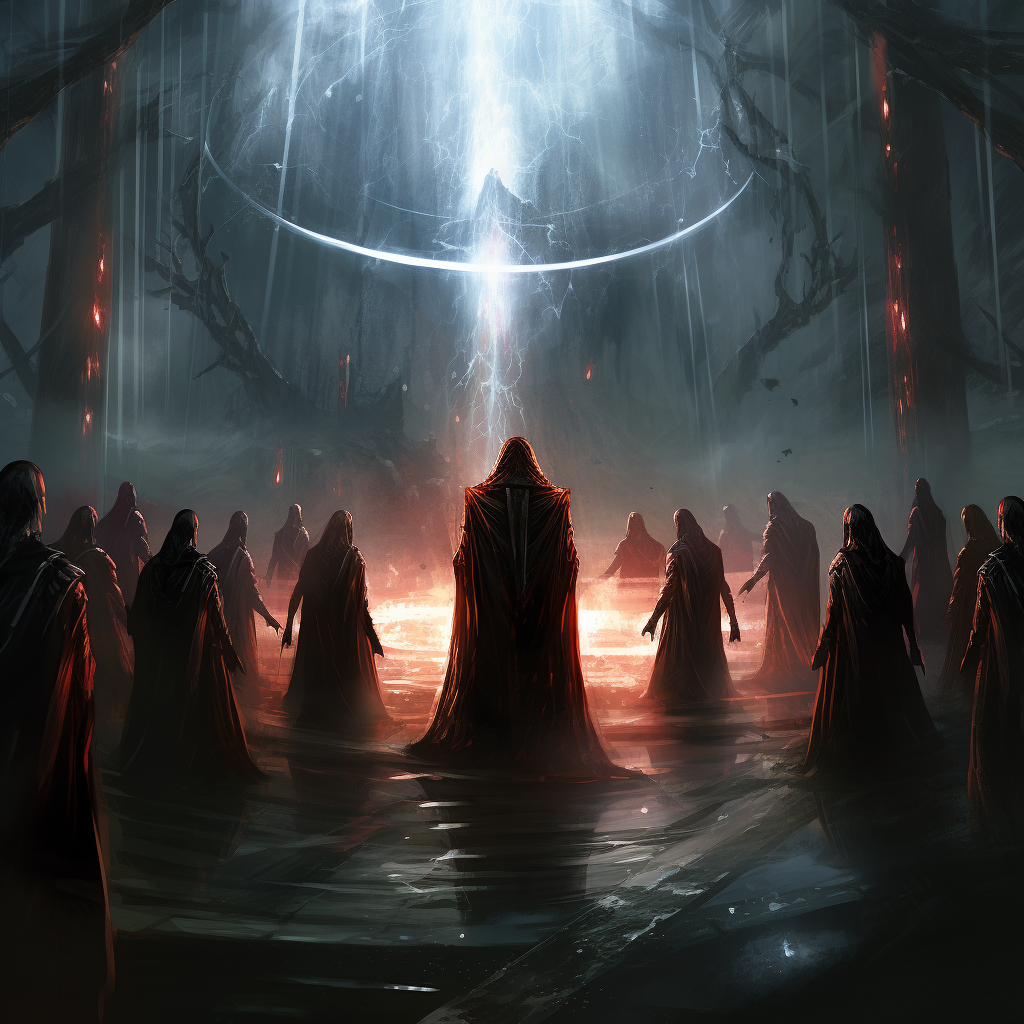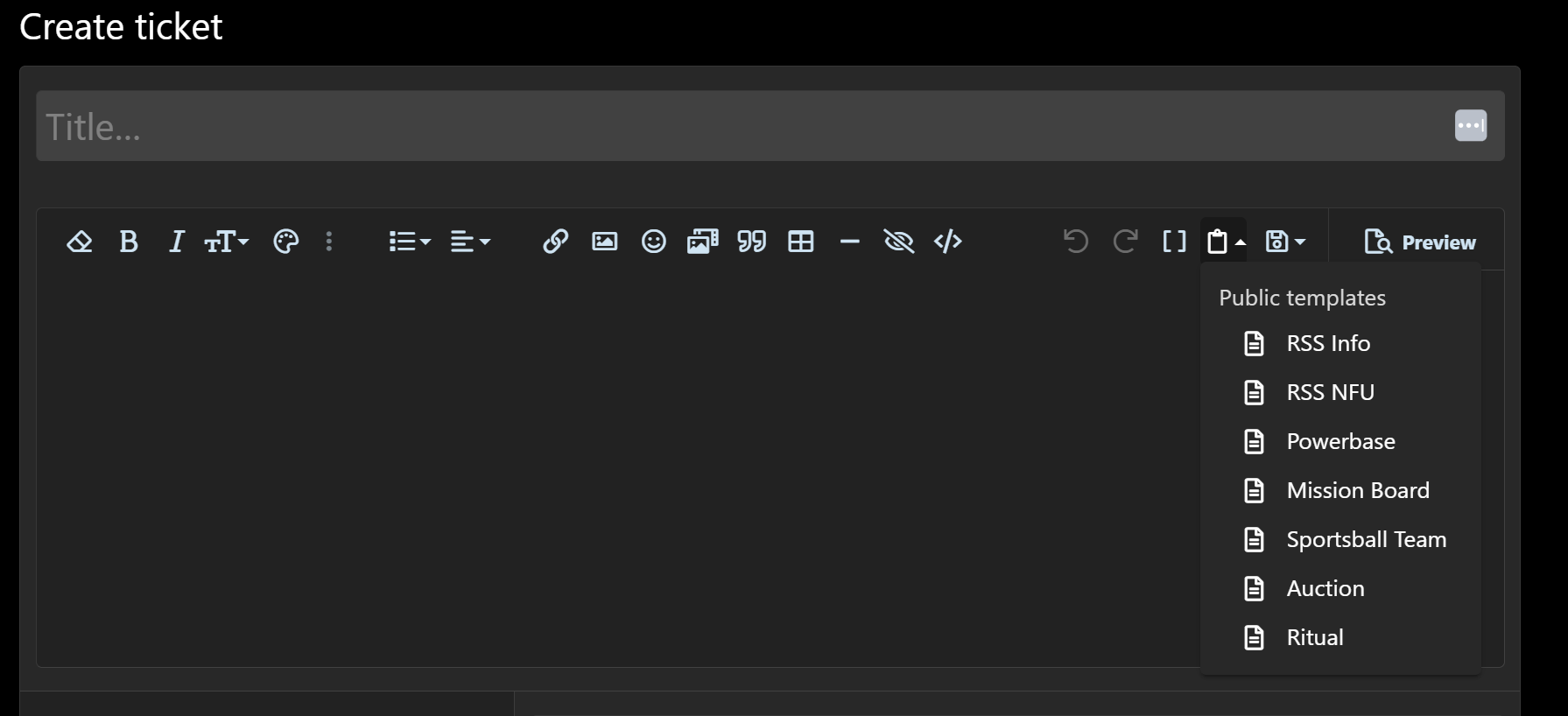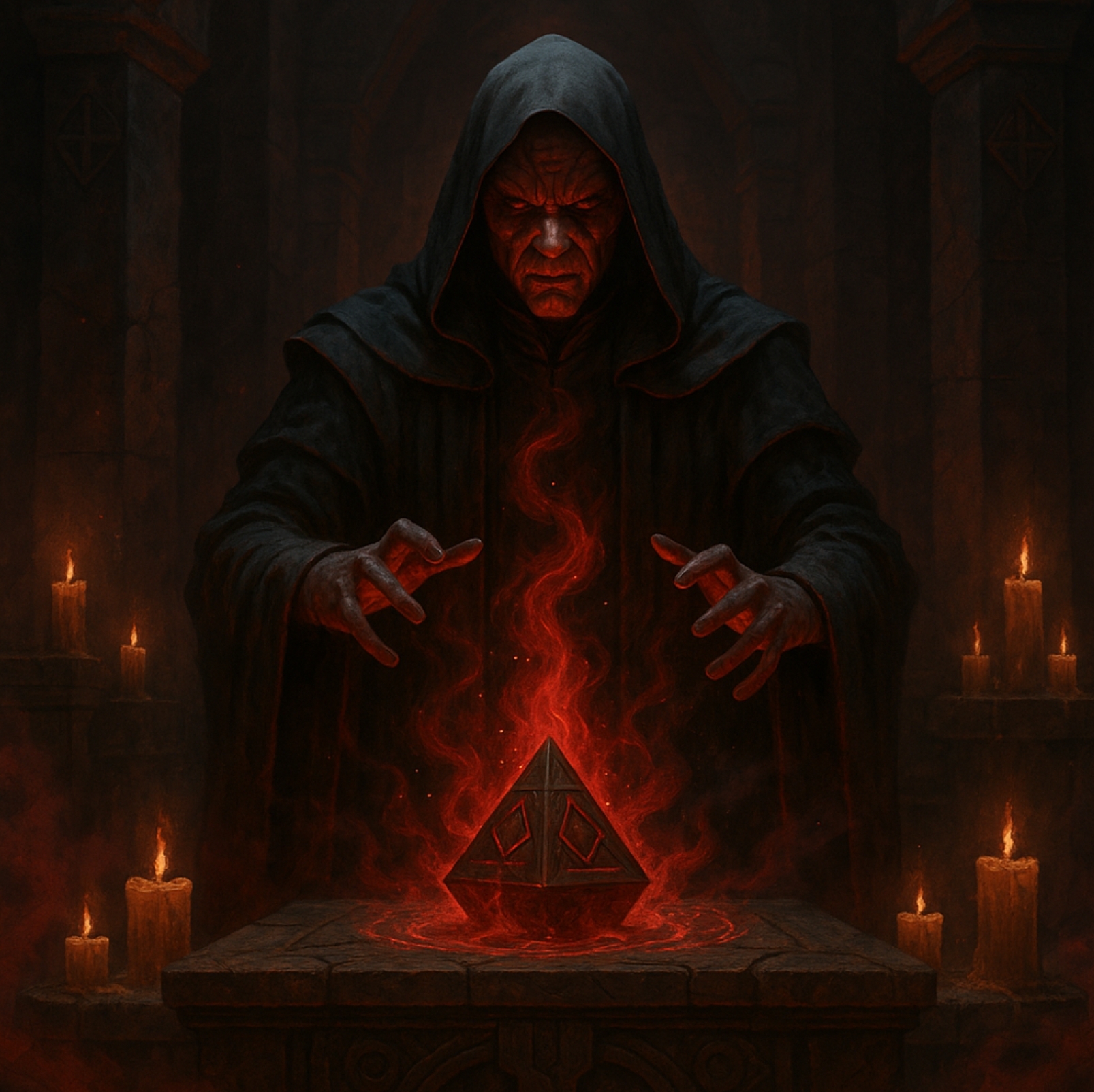Alchemy & Sorcery Rituals


What are rituals for?
If an alchemist wishes to create an item or a sorcerer use the Dark Side on a larger scale, they will need to conduct a ritual. These events are usually set pieces with a lot of thematic roleplay and involve a lot of creativity on the part of the player.
How do Rituals work?
In order to conduct a ritual an alchemist or sorcerer will first need to submit a ticket to the officer inbox outlining the detail of their ritual, they will then be given a target roll. Once they have their target roll, they may conduct the ritual and attempt to roll for success.
The rolling aspect of our rituals is designed to emphasize planning and preparation. After you submit your proposed ritual, we score it based on Intent, Preparation, and Execution, giving each a score. We will then compare this to a table (which we will not share) that determines how many successes are required according to the type of alchemy or sorcery ritual you are undertaking. Once scored, we immediately inform you of the number of successes required for your ritual to succeed.
For smaller rituals, a well-planned effort often guarantees success upfront, meaning that your roll is only to determine if you gain a bonus to your intended outcome. For larger rituals, good planning minimizes the impact of rolling, reducing the risk of failure.
Only the person conducting the ritual needs to roll, which minimizes the effect of poor rolls from others and ensures that other player characters' presence isn’t arbitrary. Instead, additional players contribute a flat bonus to your roll, so involving more players further reduces the chance of failure, though for smaller rituals, they might not be necessary at all.
In short, the outcome of your ritual is primarily determined by the ideas and preparation behind it, rather than the dice rolls. However, the system doesn’t reward laziness or poorly conceived ideas—rituals that are poorly thought out, lack flair, or are overly ambitious will still face a high chance of failure.
What is intent?
Intent is essentially about whether your ritual makes sense overall: Is your stated goal reasonable, does the structure of the ritual make sense according to this goal, is the the concept of the ritual in keeping with our roleplay setting.
What is preparation?
Preparation, as the name implies, is about how you prepared for the ritual: the more effort you put into getting the right ingredients or time spent testing and experimenting for the ritual, the better the outcome. This can be expressed through events ran to get ingredients or roleplay devoted to experimenting.
Preparation also includes a time element. Big rituals don't happen overnight and if you're aiming to create something special in a short time frame, you're more likely to fail.
What is execution?
Execution represents the planned flair and creativity you put into the actual ritual itself: The words spoken, the actions undertaken, the ritual circles you create, or theatrics involved. A good ritual needs some flair, but keep in mind that if the proposed ritual ends up feeling unthematic or silly, that could work against you.
What about other players?
As stated above, involving other players will give you a bonus to your ritual if they are active participants, but they are not needed for all rituals. That said, roleplay without at least an audience is rarely fun, so we'd always suggest you should have an audience along for the ride.
In terms of how the ritual impacts those participants, we may specify something for the failure aspect of the ritual, but otherwise it's up to you to decide what their involvement might entail.
Types of Alchemy and Ritual
To help players better understand how we categorise their submissions, we will generally view them according to the table below. Lower end creations will usually have limited scope, timeframes or charges. Higher end rituals will create powerful items or effects, but require a much better executed ritual to succeed.
Type | Requirements | Description |
|---|---|---|
Small Flavour | Rank 1 - 2 | Very limited power, duration or area of effect. Typically only impacts an individual or immediate vicinity. |
Small RSS | Rank 1 - 2 | Time limited to a few days or charges, only minor RSS impact. |
Medium Flavour | Rank 2 - 3 | Limited power, duration or area of effect. Can impact a few characters or immediate vicinity in obvious ways. |
Medium RSS | Rank 2 - 3 | Time limited to a few weeks or charges, only modest RSS impact. |
Large Flavour | Rank 3 - 4 | Larger power, duration or area of effect. Can impact many characters significantly and cover a large area. |
Large RSS | Rank 3 - 4 | Permanent item with buff to RSS. Usually situational, or with negative RSS impact too. |
Huge Flavour | Rank 4 - 5 | Huge power, duration or area of effect. Can impact a very large area and potentially thousands of characters. |
Huge RSS | Rank 4 -5 | Permanent item with buff to RSS. Usually a flat bonus with no negative RSS impact, or bigger buff with some form of negative impact. |
To help give some examples of what might be appropriate at given ranks, we've provided a table of ideas below. Please note these are just examples and not a definitive list. You can propose anything that matches the themes of our guild and setting.
Type | Requirements | Alchemy (Example) | Sorcery (Example) |
|---|---|---|---|
Small Flavour | Rank 1 - 2 | Creates a tankard that allowed the user to drink any strength of alcohol poured within without becoming intoxicated. | Creates a ritual is conducted to reveal the cause of death for a dead character. |
Small RSS | Rank 1 - 2 | Creates a medallion which when worn grants the user an extra re-roll but which is consumed when that re-roll is used. | Creates a ritual to increase a users skill in detoxify poison by one rank for twenty four hours. |
Medium Flavour | Rank 2 - 3 | Creates a compass which can be used to track the location of another character if a drop of their blood is placed within it. | Creates a ritual that makes the user invisible to the naked eye for up to two hours. |
Medium RSS | Rank 2 - 3 | Creates strength totem that gives +1 die in a strength based roll but can only be used three times before it breaks. | Creates a ritual that reduces someone's dice pool by 1 for 24 hours. |
Large Flavour | Rank 3 - 4 | Creates a ring which when worn allows a user to change their appearance for sixty minutes. Characters with Force Sense 3 can see through the deception. | Creates a ritual that allows the user to take control of non-sentient creatures within the radius of 3km and control those creatures for up to one hour. |
Large RSS | Rank 3 - 4 | Creates a set of armour that allows the user to change saber forms but must randomly roll for that form. | Creates a ritual that connects three players, empowering them with +1 die when using Force Lightning, but only when together. |
Huge Flavour | Rank 4 - 5 | Creates a massive sithspawn that can descend on a fortified position to lay waste to it. | A ritual that grants a user the ability to heal from terrible wounds by draining the life of many others. |
Huge RSS | Rank 4 - 5 | Creates a medallion which when worn grants the user +1 success to any roll for a day. Then -1 success for a week. | A ritual that gives the user +2 successes for a day, greatly increasing their power. |
The Process
As of today the new process for conducting a ritual will be as follows:
- You come up with the idea for your ritual and submit an inbox ticket using the template shown below. In this you will include your intent, preparation, execution as well as a proposal for what failure or success would look like.
- Ideally you will have already begun your preparations at this stage, but you could wait to hear the outcome before doing so.
- The officer team will score your ritual, referring to our own reference table and decide how many successes are needed. We will also potentially amend your proposed failure or success outcomes.
- If you think that is something you can achieve, you proceed to conducting your ritual.
- If you've aimed too high and do not think you can reach the number of successes required, you can always resubmit the ritual once you've finessed the idea.
- At the climax of your ritual, you make a roll in the #rituals-and-alchemy channel to see how many successes you get, listing any traits or bonuses you would get. A table of bonuses can be seen below. You may of course use re-rolls but cannot edit or delete anything in this channel.
- Upon completing your roll you'll know whether your character failed, succeeded or got a bonus and can proceed from there without referring back to the officer team (unless we explicitly request you do).
Bonuses
Bonus | Effect |
|---|---|
| Ritualist | +2 Dice |
| 2-3 Players Participating | +1 Success |
| 4-7 Players Participating | +2 Successes |
| 8+ Players Participating | +4 Successes |
The Template
When you create a ticket, you can access the appropriate template to help format your submission using the button below.

Frequently Asked Questions
Q. Do I need to Inbox every ritual I do?
A. If your ritual will create any effect or item that will impact the guild or its narrative, it must be inboxed. If you are creating something entirely for private roleplay that will not manifest within the wider guild, all we ask is you cleave to the guidelines we provided.
If in doubt, inbox the Officer Team, and we can inform whether a full submission would be required.
Q. How do I know if it will impact the guild?
A. If players outside of your private roleplay ever hear about it in roleplay or it appears in a lore entry or dossier, it's impacting the guild.
Q. I am not sure how my proposed ritual would be graded, medium or high, can I ask?
A. No. If you submit your idea and we deem it more difficult than you expected, then you can either park the ritual until your character is stronger and can attempt or, or finesse the idea and resubmit it.
Q. Can I give player characters who contribute fun effects from being part of the ritual?
A. Absolutely, though the impact should be limited unless you've had officer approval. If the participants are unhappy, they can always beat the snot out of your character later.
Q. Is there a limit to how many rituals I can do?
A. Realistically you should only be working on one thing at a time, at least formally. If you submit multiple rituals to us, your character is probably doing too much and would burn out. We suggest focusing on one, or perhaps two things if you're a Lord, at any given time.
Last edited by a moderator:

